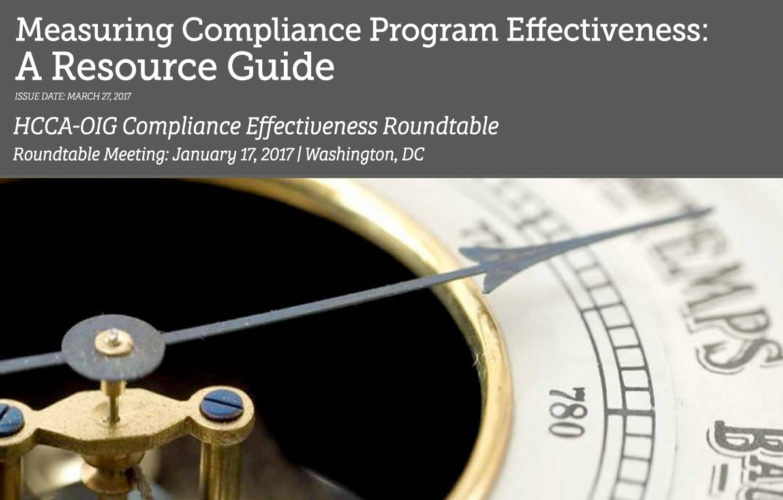
COMPLIANCE ALERT: OIG Releases Healthcare Fraud Compliance Program Guidelines
Uncategorized - 1 April, 2017
The Office of the Inspector General (OIG) has published a resource guide for measuring compliance program effectiveness. During a roundtable meeting in January of this year, OIG compliance professionals and staff discussed all seven elements of a compliance program and suggested ideas about “what to measure” and “how to measure”. The OIG’s goal was to compile a guide for organizations of various size, operational complexity, industry sector and with varying resources to use to measure their own compliance program effectiveness. Although the OIG’s publication is not to be used as a standard, it includes individual compliance program metrics that organizations may use to evaluate their own programs. A copy of the OIG’s publication can be found here: https://oig.hhs.gov/compliance/101/files/HCCA-OIG-Resource-Guide.pdf
The Resource Guide identifies improvement strategies for use by healthcare organizations to align their compliance program with healthcare fraud prevention laws. Guidance is provided on compliance program management, including integration of an organization’s ethical principles with the compliance program’s code of conduct, development and maintenance of policies and procedures, regular review of the compliance program, evaluation of providers, staff and vendors’ compliance with healthcare fraud prevention laws, training programs, disciplinary action and corrective action plans.
The OIG’s guide is a powerful tool for healthcare organizations to use to assess their current compliance program, identify areas needing attention, establish a robust compliance plan, and ensure continued compliance across all aspects of their business. The guide is broken down into 7 sections, detailing a broad list of measures under each separate compliance program element – organizations are able to select the measures best suited to their needs:
- Standards, Policies, and Procedures
- Compliance Program Administration
- Screening and Evaluation of Employees, Physicians, Vendors and other Agents
- Communication, Education, and Training on Compliance Issues
- Monitoring, Auditing, and Internal Reporting Systems
- Discipline for Non-Compliance
- Investigations and Remedial Measures
Additionally, the resource guide discussed how compliance programs should be managed to ensure healthcare fraud prevention laws are followed. OIG recommended 24 administration improvements, including maintaining a budget, collaborating with other stakeholders in the organization, aligning program scope with industry standards, updating the healthcare fraud prevention law knowledge base, and recognizing the need for outside assistance.
The federal watchdog also defined the responsibilities that different committees should have when it comes to a compliance program. For example, compliance program leaders develop an oversight committee, define the highest authority level, and ensure that the governing body understands its compliance duties.

